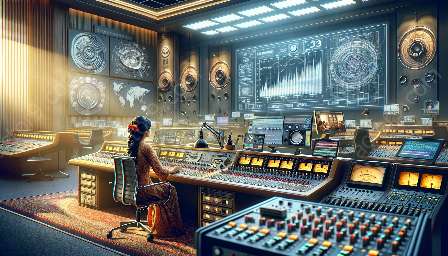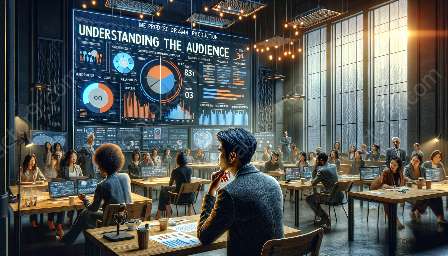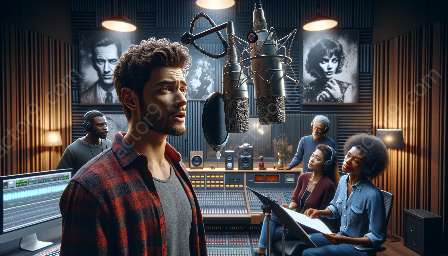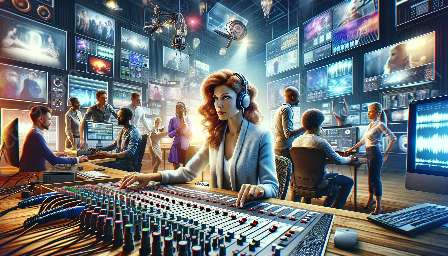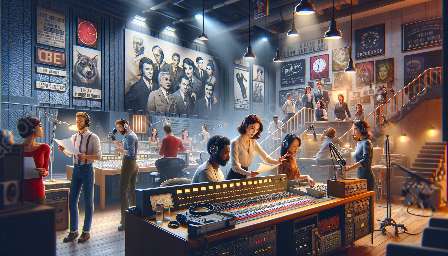Radio drama has witnessed significant evolution due to advancements in technology, transforming the production, distribution, and consumption of compelling audio storytelling. This cluster explores how technology has influenced the art of radio drama production and the innovative tools and techniques utilized in creating captivating radio dramas.
The Influence of Technology on Radio Drama Evolution
Technology has played a pivotal role in shaping the evolution of radio drama, revolutionizing the way stories are written, performed, recorded, and delivered to audiences.
1. Scriptwriting and Storytelling
With the advent of word processing software and digital editing tools, scriptwriters and playwrights have gained greater flexibility and efficiency in crafting compelling narratives for radio dramas. They can easily revise, edit, and collaborate on scripts, leading to more refined and polished storytelling.
2. Audio Recording and Production
Modern recording equipment and digital audio workstations have enabled radio producers to achieve higher production quality and sound fidelity. From multi-track recording to sophisticated sound effects creation and manipulation, technology has empowered producers to create immersive and realistic sonic landscapes for radio dramas.
3. Sound Design and Foley Artistry
Advancements in sound design software and Foley recording techniques have brought a new level of creativity and authenticity to radio drama production. Sound designers can meticulously craft intricate soundscapes and lifelike sound effects, enhancing the audio storytelling experience and immersing listeners in the fictional worlds of radio dramas.
4. Distribution and Digital Platforms
The emergence of digital platforms and streaming services has expanded the reach and accessibility of radio dramas, allowing audiences to enjoy audio dramas on-demand across various devices. Podcasting, online radio stations, and streaming apps have democratized the distribution of radio dramas, offering a diverse array of storytelling content to listeners worldwide.
Technology Used in Radio Drama Production
In the realm of radio drama production, a wide array of cutting-edge technologies and tools are employed to create captivating and immersive audio narratives. From specialized microphones to advanced sound processing software, the following are key technologies integral to the production of radio dramas:
1. Condenser and Dynamic Microphones
High-quality condenser and dynamic microphones are essential for capturing clear and expressive vocal performances in radio dramas. These microphones help bring characters to life and capture the subtleties of voice acting with precision, ensuring compelling and convincing portrayals.
2. Digital Audio Workstations (DAWs)
DAWs serve as the digital backbone of radio drama production, providing versatile and powerful platforms for recording, editing, and mixing audio content. Producers leverage DAWs to layer dialogue, music, and sound effects, sculpting intricate sonic tapestries that enhance the dramatic impact of radio narratives.
3. Virtual Sound Libraries and Sample Libraries
Extensive sound libraries and sample collections offer a treasure trove of ambient sounds, music cues, and expertly crafted sound effects that enrich the audio storytelling experience. From footsteps to environmental sounds, these libraries provide producers with a diverse palette of sonic elements to bring radio dramas to life.
4. Foley Recording and Props
Foley artists utilize an assortment of props and specialized recording techniques to create authentic sound effects that add depth and realism to radio dramas. From mimicking footsteps to crafting intricate object sounds, Foley artistry breathes life into the sonic world of radio dramas, heightening the dramatic impact and emotional resonance of audio narratives.
5. Surround Sound and Spatial Audio Technologies
Immersive audio technologies such as surround sound and spatial audio processing enable producers to spatially position sounds within the audio landscape, creating an enveloping and dynamic listening experience for audiences. These technologies expand the scope of storytelling by enhancing the sense of immersion and environmental realism in radio dramas.
Conclusion
The impact of technology on radio drama evolution has ushered in a new era of audio storytelling, empowering creators to push the boundaries of creativity and craft captivating narratives with unprecedented levels of sonic richness and emotional depth. As technology continues to evolve, the future holds exciting prospects for the further reinvention and innovation of radio drama production, paving the way for immersive and unforgettable storytelling experiences for audiences worldwide.






